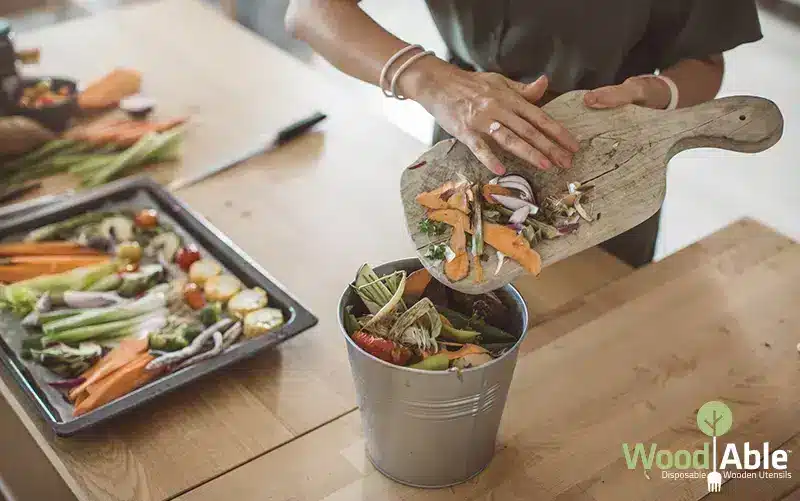WoodAble Blog
Composting Without a Garden
Composting at home without a garden is possible, whether indoors or outside.
Outside – Even if all you have is an apartment patio, you can get an aerated small compost bin, or else drill holes generously into the sides of a standard plastic storage container. Just remember to layer vegetable kitchen scraps and coffee or tea grounds (greens), then twigs, leaves, leaves, straw, bark chips and small branches (browns) to make pockets of air in between. If you don’t have an aerated cover with holes, top it with a brown layer to keep pests out.
Keep it moist but not soggy. As the food breaks down, it will generate heat. You can use a thermometer to check the temperature, which should be 140-160 degrees. You may need to stir it, like stirring a campfire, to introduce more air to keep it hot. Then you can use the soil for potting your favorite plants.
Inside – You can purchase small kitchen composting bins (plastic or metal – about the size of a small waste basket) and use a compostable liner. For every layer of vegetable scraps, include some newspaper for your ‘brown’ layer. Again, keep it moist, and stir it as needed. Two recommendations are to take the finished product to a neighborhood garden, or pot an indoor vegetable garden with the renewed soil.
Worms? Yes, outside or inside. It’s called vermicomposting. If you want to hurry the process along, online research suggests getting red wigglers. They enjoy eggshells, lettuce, apples, tea bags and coffee grounds, but not onions. It is said that you need about 500 worms. Keep the lid on your composter so they don’t wander off. Some gardeners think it is delightful to host these helpful little friends.
An indoor/outdoor composting plan is the Japanese method called Bokashi. You buy packages of bran that have been infused with microbes that will ferment the food scraps, so they won’t have an odor as they break down. Some country club restaurants are beginning to use this method to cut down on waste, and then return the nutrified soil to their lawns. You can get Bokashi kits with an accompanying compost bin. Every time you put in a layer of scraps, add some bran. The difference here is that you don’t need aeration – just let it sit.
There is a spigot at the bottom of the can to drain off liquid buildup. You can use this highly nutritious liquid to fertilize houseplants. The mixture itself becomes ‘pickled’ in about 10 days, and then must be buried (not topped) outside to finish the breakdown process over perhaps a month. This would require a second buried compost bucket if it is being done all indoors.
If you are a gardener, an added advantage of composting is knowing exactly what is in your soil when you use it to grow new vegetables.

